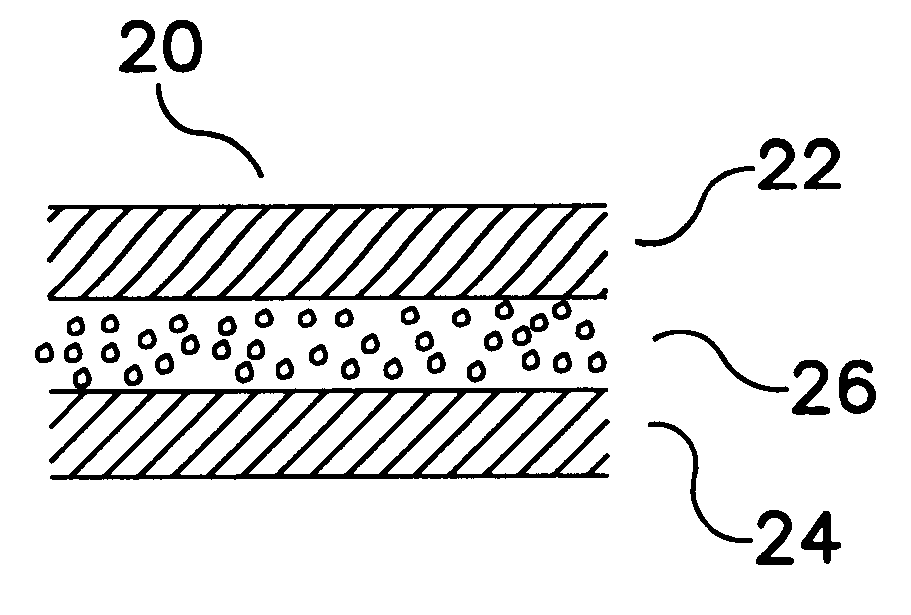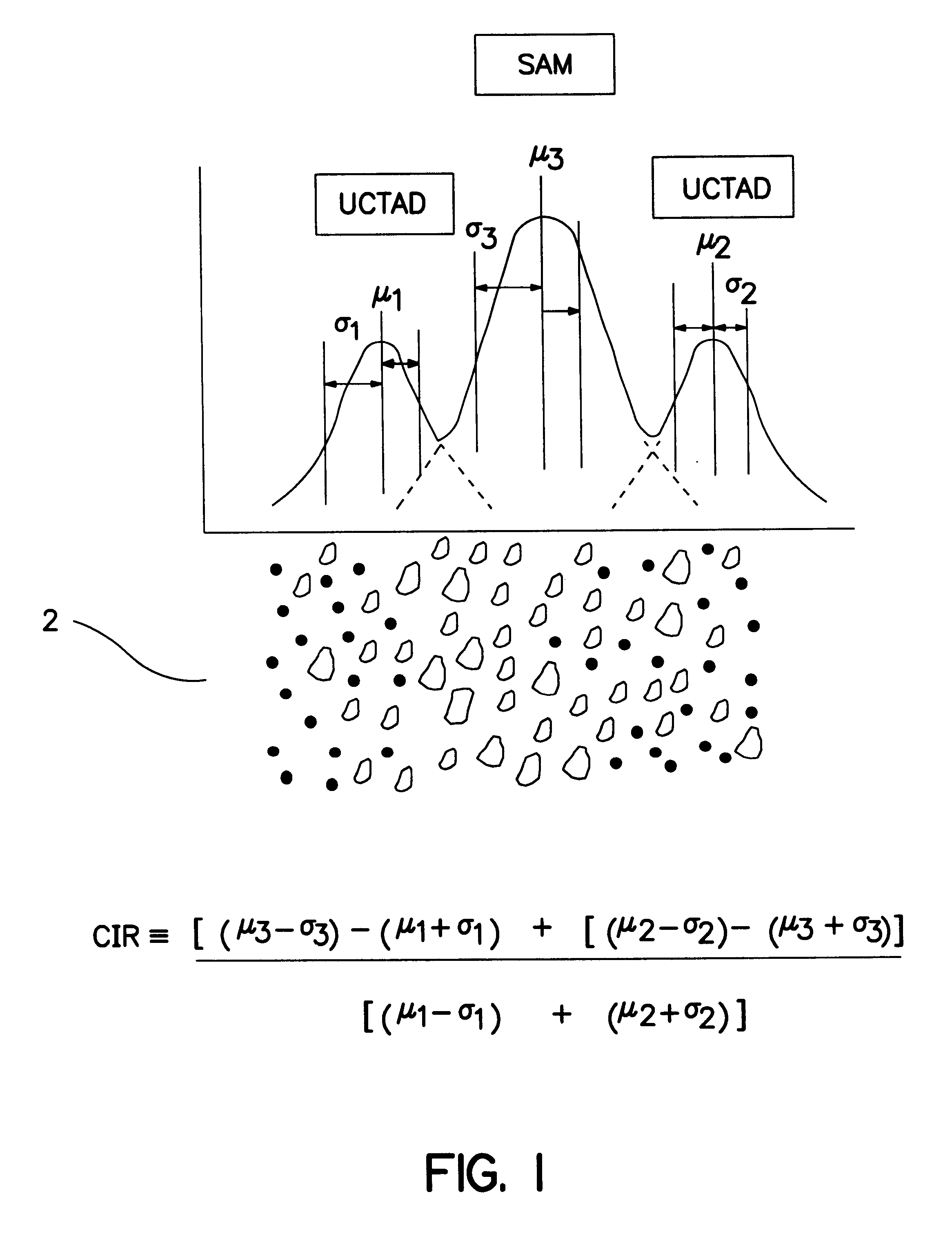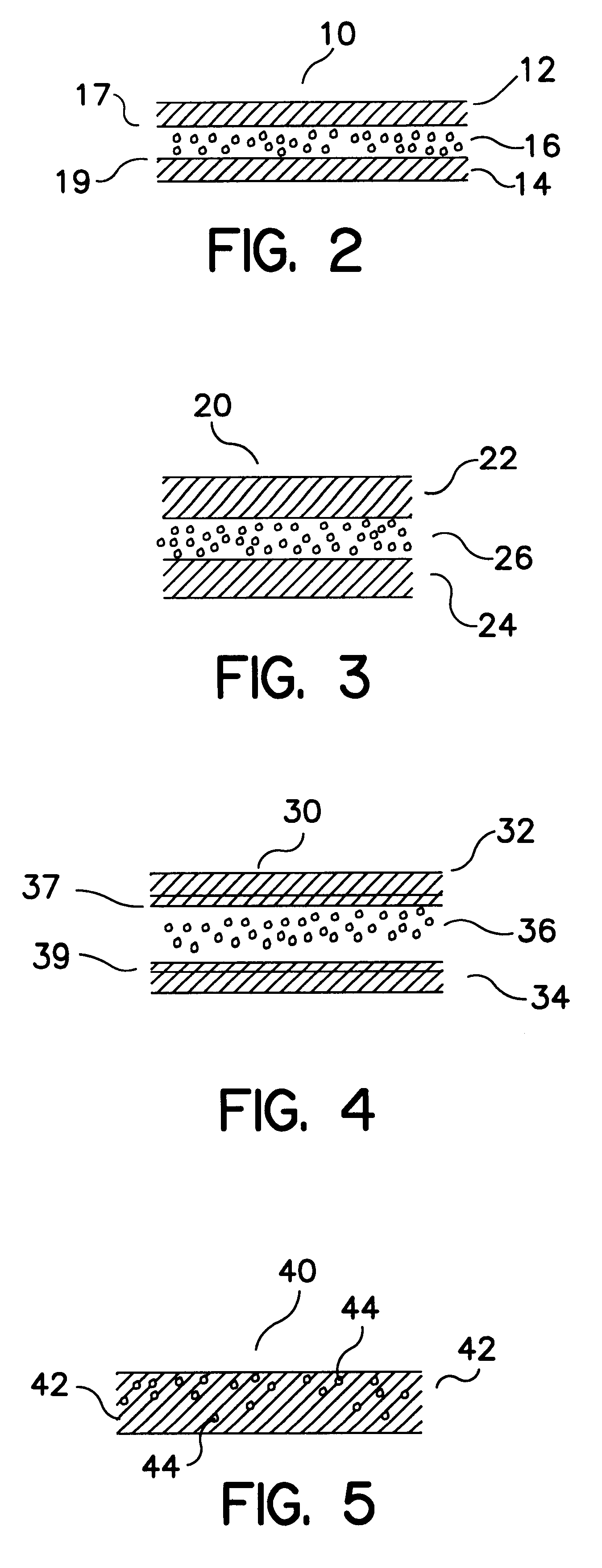Absorbent structure and method
a technology of absorbent structure and absorbent product, which is applied in the direction of bandages, weaving, synthetic resin layered products, etc., can solve the problems of low efficiency of absorbent structure's utilization of its capacity, low absorbent capacity of absorbent product, and significant portion of wicking layer unharmed
- Summary
- Abstract
- Description
- Claims
- Application Information
AI Technical Summary
Benefits of technology
Problems solved by technology
Method used
Image
Examples
example i
A multifunctional material was produced by pressing Super-Absorbent Material (SAM) of the type Favor 880 having a particle size distribution of 300-600 microns in between layers of Un-Creped Through Air Dried (UCTAD) tissue having a composition of 50:50 CR1654 / HPZ and a basis weight of 67 gsm. A bottom layer of UCTAD was embossed to form depressions in the sheet. The preferred amount of SAM then was placed into the depressions in an amount of 150-175 gsm SAM. A second sheet of UCTAD was sprayed with a fine mist of water to achieve a moisture content of approximately 40% by weight. The wet layer of UCTAD then was placed on top of the UCTAD layer containing the SAM in the depressions. The structure then was pressed to form the bond between the two layers. The water was used to enhance bonding between the two sheets as hydro-bonding. The depressions containing the SAM protected the open areas in the UCTAD sheet from being pressed. The depressions protected the distribution material's a...
example ii
MACs were produced by imprinting SAM between layers of UCTAD, barrier tissue, and combinations of both. The process by which these materials were manufactured was produced by spreading SAM onto a bottom sheet of tissue. The bottom layer containing the SAM then was sprayed with a fine water mist. A top sheet of tissue was laid on the bottom layer, and the laminate was pressed to bond the two layers of tissue together forming a sandwich. These sandwiches were very thin and flexible. Combinations of these MACs included the following structures.
(1) UCTAD(67 gsm)-SAM(120 gsm)-UCTAD(67 gsm). Total weight was 254 gsm.
(2) UCTAD(67 gsm)-SAM(120 gsm)-Barrier tissue(20 gsm) Total weight was 207 gsm. By barrier tissue is meant pulp sheet of 20 gsm basis weight.
(3) Barrier tissue(20 gsm)-SAM(86 gsm)-Barrier tissue(20 gsm) Total weight was 126 gsm.
These MACs produced in Example II were found to be materials which transport and retain the liquid in the sample. The MAC using two layers of barrier t...
example iii
As control, three layers of 67 gsm UCTAD (50 / 50 CR1654 / HPZ) were produced.
PUM
| Property | Measurement | Unit |
|---|---|---|
| height | aaaaa | aaaaa |
| length | aaaaa | aaaaa |
| length | aaaaa | aaaaa |
Abstract
Description
Claims
Application Information
 Login to View More
Login to View More - R&D
- Intellectual Property
- Life Sciences
- Materials
- Tech Scout
- Unparalleled Data Quality
- Higher Quality Content
- 60% Fewer Hallucinations
Browse by: Latest US Patents, China's latest patents, Technical Efficacy Thesaurus, Application Domain, Technology Topic, Popular Technical Reports.
© 2025 PatSnap. All rights reserved.Legal|Privacy policy|Modern Slavery Act Transparency Statement|Sitemap|About US| Contact US: help@patsnap.com



